Pinpointing the exact number of cannabis strains is hard. Some people say that there are at least 700 different documented strains of cannabis plants in the world. That includes the original (OG) strains referred to as landrace varieties and the hybrid strains that have been developed.
Whether the cannabis plant is a Sativa, an Indica, or a Hybrid, the genus Cannabis is still the same plant. And while differential strains have more variable terpene, cannabinoid, flavonoid, colour profiles, and more, the plant has the same biological parts.
Cannabis Plant Anatomy
The cannabis plant is categorized as a dicot species. The dicot plant grows a little differently than other types of plants. Dicot plants are flowering (angiosperms) that produce a pair of leaves inside the seed while it develops.
Of the 175,000 different types of dicot plants, the cannabis plant may be the most popular and well-known. Learn more about the interesting anatomy of the cannabis plant, which has been on the planet for over 28 million years.
Cannabis Root System
Cannabis, as a dicot plant, grows a taproot system. That is a conventional main root that grows vertically into the soil. This becomes the base of the cannabis plant, and then smaller branch roots grow out from the taproot. It is sometimes also called the anchor root system.
Since the cannabis plant can grow an average of 2 to 3.6 meters, it needs a robust root system to support the branches and leaf stem. Did you know that Sativa cannabis plants grow the tallest? There have been some plants recorded at over 6 meters in height. No wonder cultivators call them trees!
Each one of the branch roots grows deeper to help the plant stabilize its weight. And the overall heaviness of the cannabis plant flowers that will develop. Cannabis are herbaceous plants, which means they will grow through the life cycle, bloom, and die after reproducing with seeds found in flower.
Cotyledon Leaves
The cannabis plant must have learned a few things to evolve for almost thirty million years. Nature designed the cannabis plant to develop cotyledon leaves. Inside the embryo of every cannabis plant seed are two seed leaves that boost the plant’s growth.
Inside the seed shell, cotyledon leaves help the plant metabolize nutrition. It pulls nutrients from the seed and transforms them into energy for plant growth. While other plants emerge with a single shoot (and must work hard to grow leaves), cannabis pops out with a couple of formed leaves, ready for rapid growth.
Cannabis Plant Stalk or Stem
Without a good foundation, nothing can grow. And when it comes to building upper body leaves and buds, the cannabis plant knows how to work on its core! The cannabis plant stem can transform into colours like red, purple, or pink.
The cannabis stem is also an area to watch. If the cannabis plant is experiencing problems such as too much (or too little) moisture, or excessive nutrients, the colour of the stem can turn yellow or brown. That indicates a need for emergency intervention to correct the growing condition and feeding of the plant, or it will die.
After the flower is harvested, people wonder what happens to all the cannabis stalks. In commercial cultivation, they are usually dried, ground into compost, and added to the soil. Some cannabis stems are processed into hemp or edibles, as there are small quantities of THC in the stem structure of the plant.
Branches
The more branches a cannabis plant has, the more potential flower. That is because each branch has the possibility of creating cannabis bud sites. For cultivators, the more, the merrier! And they expertly trim and train plants to produce as many branches as possible.
Nodes
When a branch develops from the main stem or another branch, there is something that looks like a little nub or knuckle. That is called the node. Sometimes fan leaves and even bud sites can grow on certain nodes.
The nodes on a cannabis plant are very important because that’s where growers can separate “the boys from the girls.” Both male plants and female cannabis plants have sex organs that you can identify from the nodes. Male plants must be separated from female plants quickly, and that’s how growers divide and conquer.
There are spaces in between the nodes where branches develop. An experienced grower can look at those spaces and predict how tall the cannabis plant’s growth will be. Why would that matter? Taller plants can produce more nodes, which means more potential flowers to harvest. With few exceptions, commercial growers like tall cannabis plants.
Cannabis Fan Leaves
The cannabis fan leaves are large and beautiful to look at. But they have a few essential functions. Each leaf cluster is essentially a satellite dish, capturing sunlight and moisture for photosynthesis.
The cannabis fan leaves, although impressive, have very little cannabinoid content. And some scientists have suggested that the cannabis fan leaves also developed as a defence mechanism. They help hide the flower from grass-eating predators. And they also generate some shade to the root system to help the plant conserve soil moisture.
Sugar Leaves
The sugar leaves on a cannabis plant are the small pointy soft leaves that form to cradle the flower or bud. Unlike fan leaves, sugar leaves have a high THC, cannabinoid, and terpene content. And the sugar leaves are coated in resin.
Cannabis plant sugar leaves are separated during the trimming process. But they are saved because of the valuable cannabinoid content. And they are often processed into pre-rolls or oil extracts for edibles and other cannabis plant products.
Flowers
This part of the cannabis plant anatomy probably needs no introduction. It is the star of the cannabis plant lifecycle; the flower is where all the good stuff is concentrated. The cannabis flower has so much cannabinoid (including THC) content that it can be consumed raw.
Only female plants produce cannabis flower. During the flowering stage, a bud is created, a cone-shaped or circular-shaped mass. Some strains of the cannabis plant can produce brightly coloured buds.
Male cannabis plants produce pollen, which is released from the pollen sacs. The female plant develops flower pistils and orange hairs that catch and absorb pollen from a male cannabis plant.
A male cannabis plant is intercepted or separated from female plants in cultivation. If male plants and female cannabis plants are allowed to pollinate, the result is heavily seeded bud. And not desirable for smoking, even though seeded weed can be used for other cannabis products.
Bract and Calyx
The pear-shaped small leaves eventually become the buds on a cannabis plant. The bract is the pod-shaped structure that protects the cannabis seed. It is located in between clusters of sugar leaves.
The calyx is located at the base of the flower and holds the bud together on the cannabis plant. Both male plants and female plants develop a calyx. Cultivators pay close attention to the calyx because that is where the pistils and the coveted trichomes are stored.
Trichomes are the resin glands of the cannabis plant. They look shiny, and the strong scent of the strain (sweet, berry, dank, pine, or woodsy) comes from the cannabis trichomes. That is also where cannabinoids are produced, including THC and CBD, and where kief (concentrated) is collected.
Stigma and Pistil
On the cannabis plant, the stigma looks like fine hairs or strands on the pistil. Stigmas are only present on a female cannabis plant, changing colour as the plant grows. The male cannabis plants develop pollen sacks in the same location on the cannabis plant.
Cannabis stigmas can be white and then change to yellow, orange, brown, or red hues. Some strains of cannabis develop brightly coloured or high volumes of stigma. It is one of the ways that people identify certain strains. The pistil part of the cannabis plant also changes colour as the plant matures.
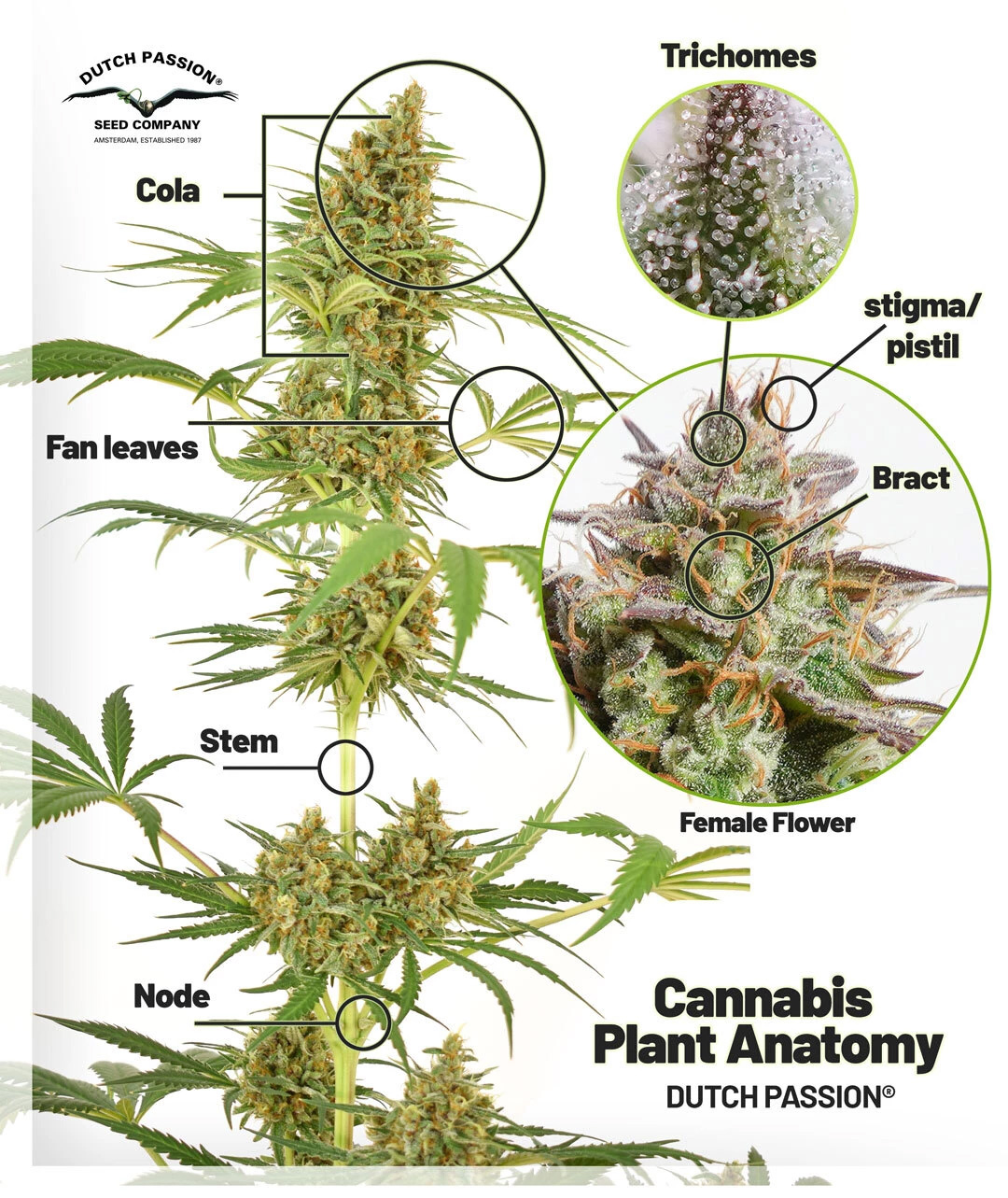
The Life Cycle of the Cannabis Plant
Wouldn’t it be nice if cannabis was more like trees? Where the same cannabis plant (or more than one) produced flowers for years? Unfortunately, the life cycle of the cannabis plant lasts for a maximum of one year.
After female cannabis plants create flowers, they die. Part of the natural process is that the fan leaves, stem, and other parts of the plant dry, and the nutrients are absorbed back into the soil. That nourishes the next generation of cannabis seeds.
There are four stages of growth and development for male and female plants:
1. Cannabis Seeds and Germination (3-10 Days)
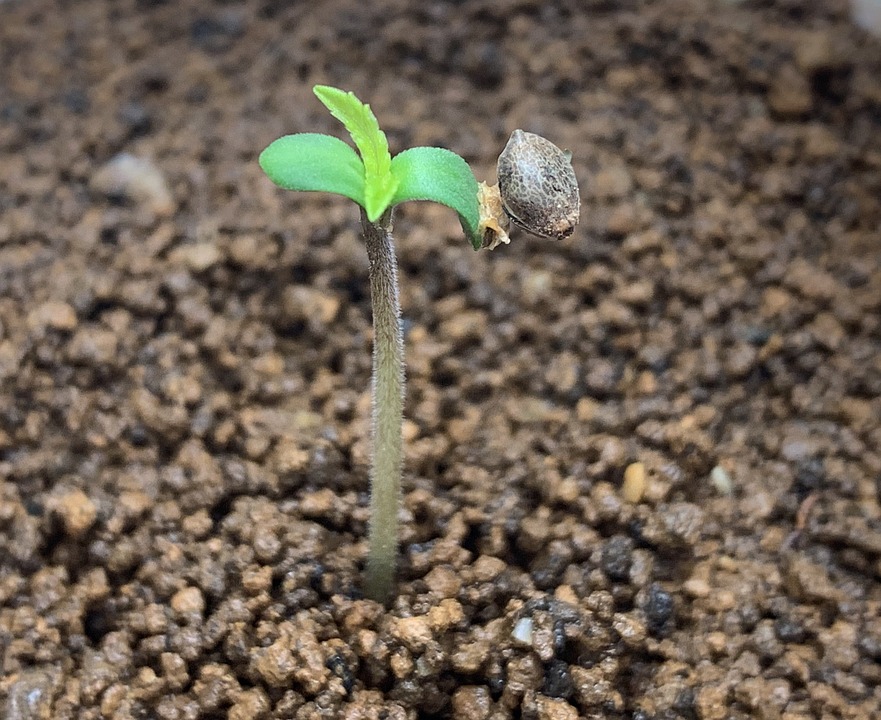
Like other plants, the life cycle of cannabis growth begins with a seed. After planting, it takes about 3-10 days for the first signs of growth to show up. During germination, the cannabis seed develops two leaves which will break through the shell as it grows larger.
2. Seedling stage (2-3 Weeks)
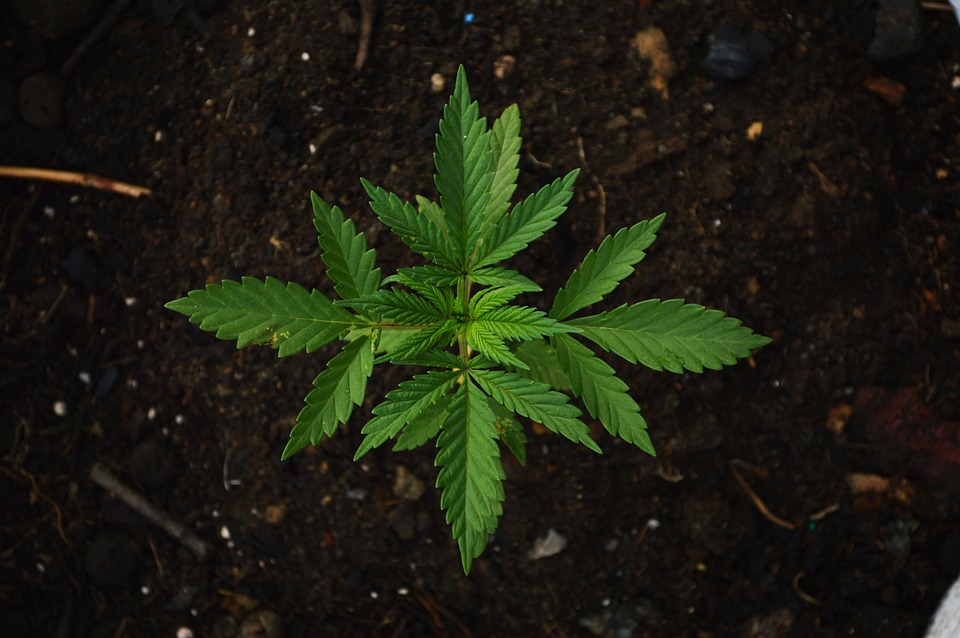
After germination, the next step for the growing cannabis plant is to develop a seedling. This is like the teenage years of the plant, where the focus is on growing a healthy root structure, stem, and more leaves.
During the seedling stage, both female and male plants develop a root crown. That durable structure connects the central stalk (stem) to the root system. Cannabis plants build a strong stem and root structure to support all the weight that will develop when the plant flowers.
Cannabis roots develop in a pyramid-shaped structure, with the tap root heading deeper into the soil with supplementary roots developing off of it. The seedling stage also involves developing the leaves that capture sunlight for photosynthesis and moisture.
3. Cannabis Vegetative Stage (3-16 Weeks)
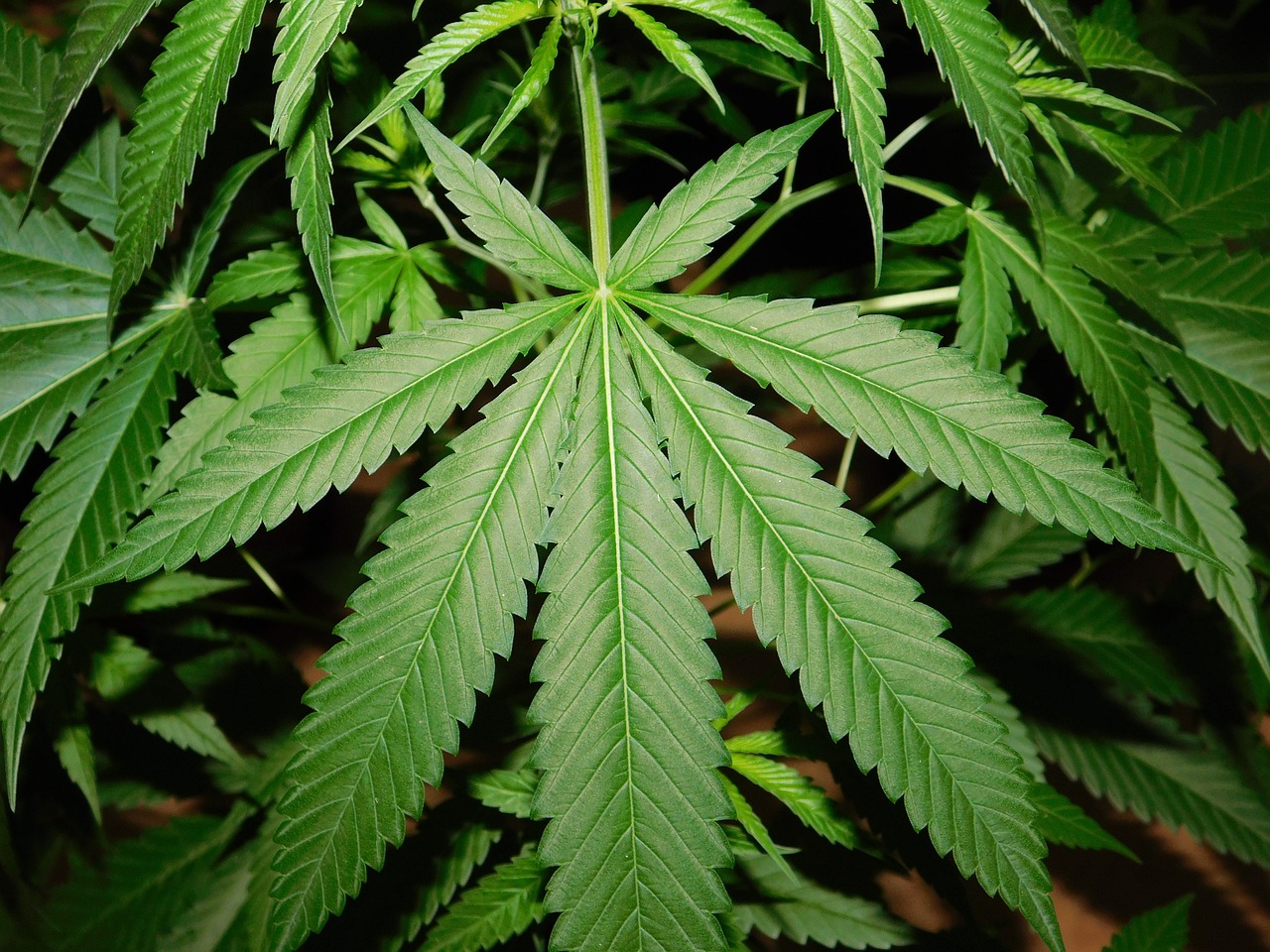
During the vegetative stage of the cannabis plant, female plant seedlings use all of the plant’s energy to grow leaves. This is when the impressive fan leaves develop, and eventually, the sugar leaves and the cannabis flower.
Balancing the hours of light and darkness for the cannabis plant is critical during the vegetative stage. And monitoring the pH, soil acidity, and moisture of the plant. Many novice growers find they have cultivated female plants that act like house plants instead of cannabis plants that will produce flowers. This happens if the proper environmental conditions are not met.
If the photoperiod (18 hours of light and six hours of darkness per day) is not met, the cannabis plant will not bloom, and no flowers or buds will be produced. There are some strains of cannabis called “autoflower” that will develop bud no matter what after a set period.
4. Flowering stage
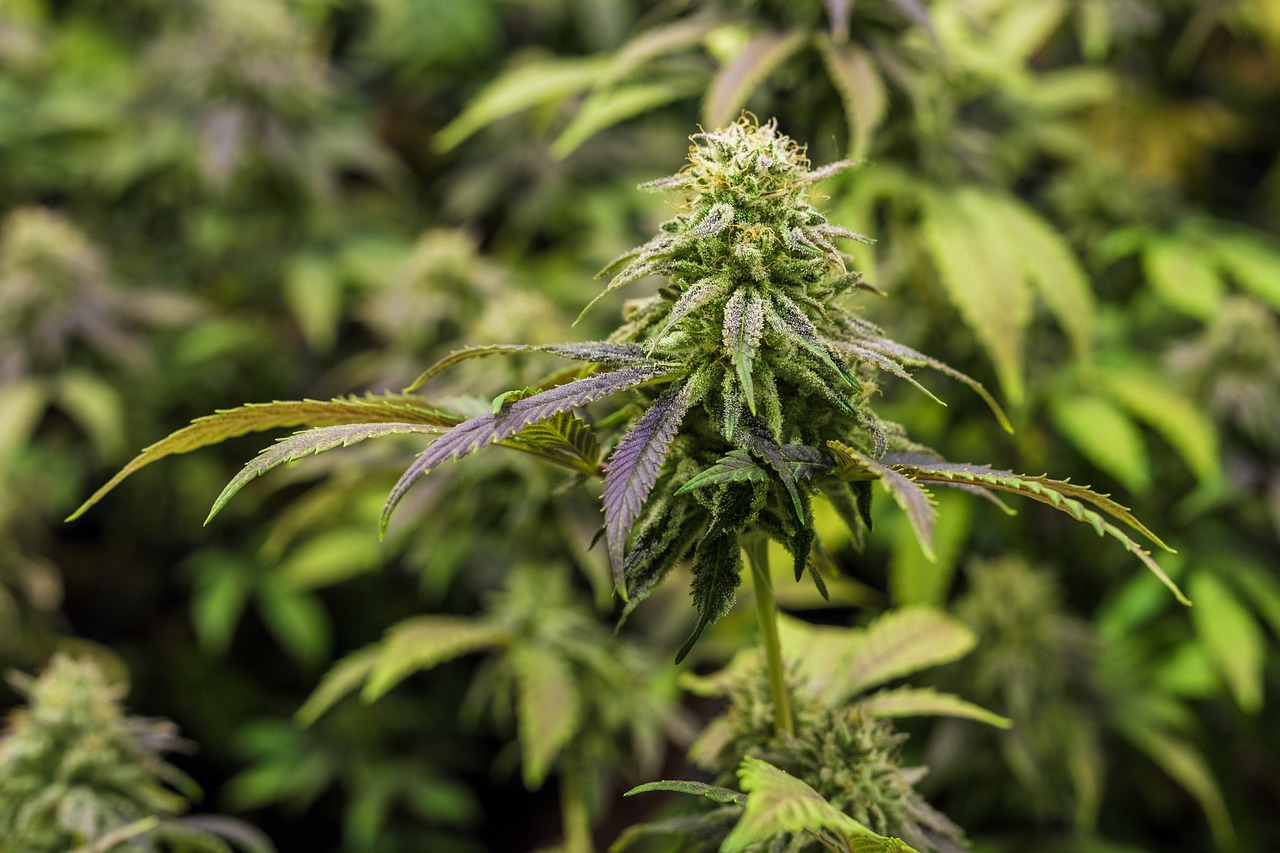
After the plant has matured, the flowering stage involves equal light and darkness to encourage the plant to flower. A healthy cannabis plant needs a lot of light, but during the flowering stage, it falls to less than twelve (12) hours of light—and twelve (12) hours of darkness.
The flowering stage for the female cannabis plant spans 8-12 weeks, but it is broken up into three development stages for the plant:
Flowering Initiation
After about 1-3 weeks, the cannabis plant starts flowering initiation. Prior to this stage of the cannabis plant lifecycle, it received an average of ten hours per day of darkness. The pre-flowers are developed, and cannabis pistils are formed. These are the small white hairlike structures that become visible.
Mid-Flowering Stage
Around the five-week mark, the mid-flowering plants begin to change again. The plant stops growing aggressively in height and reallocates resources to growing buds. As the cannabis flower grows in size and volume, it starts producing more trichomes, which create the scents characteristic of the strain.
Late Flowering Stage and Ripening
The late flowering stage is the final step of growth for cannabis plants. That is when the buds become large and when the cannabinoid and terpene potency is highest.
Depending on the strain, the duration of the flowering stage varies. Sativa cannabis plants can take from 10-12 weeks to flower. In comparison, Indica cannabis plants average around eight (8) weeks from developing buds to harvest. Only female cannabis plants will flower.
The Harvesting Process
Once the plant is fully mature, it is time to harvest it. And commercial growers have two different methods they use to collect the valuable parts of cannabis plants.
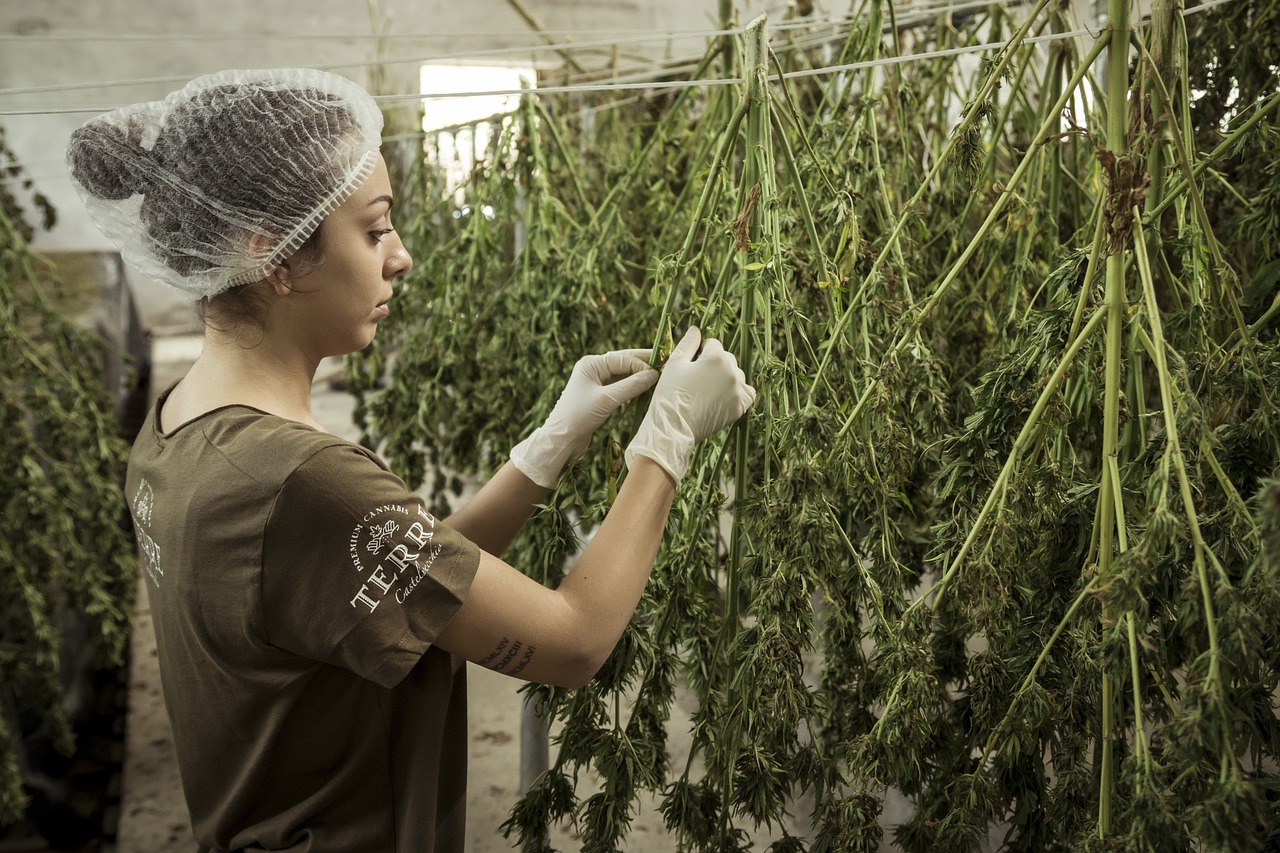
Wet Trimming Cannabis Plants
Wet trimming involves cutting down the whole plant. Flower buds are then removed from the branches. Sometimes a method called bucking is used, which includes trimming off all smaller branches from the cannabis plant and tiny buds. This directs all the plant’s energy to grow larger flowers and buds.
Some of the benefits of using wet trimming for harvesting cannabis plants include:
- Reduction in the amount of mould to form from the stalk to the flower.
- Taking up less space because the excess foliage is already removed.
- Saving time, it is easier to do the final trim.
- Less difficulty removing fan and sugar leaves.
- Some cultivators also believe that wet-trimming cannabis plants help to keep the trichomes intact. That is because the plant remains rooted and sticky. It can also help conserve terpenes and flavonoids better.
Dry Trimming Cannabis Plants
Dry trimming involves cutting the whole plant down and hanging it upside down to dry. This process is common more common with smaller crops. But there are some advantages to dry trimming cannabis plants.
Cultivators that dry trim cannabis plants say that it allows:
- Preservation of moisture, cannabinoid potency, and terpenes.
- Flower to have a more pleasant flavour. When they are dried, the flower has less chlorophyll, which can help it taste better.
- Easier harvesting; when the bud is dried, it is less sticky, and leaves and other trim won’t get stuck to the flower.
- One of the disadvantages of dry trimming cannabis plants is that it can make processing more time intensive. The bud must still be trimmed and separated from the fan leaves and sugar leaves surrounding the flower.
When you see pictures from a cultivator where plants hang upside down on something that looks like a clothesline? That is dry trimming cannabis plants. But another downside to the method is that it takes up a lot of space.
What Is a Cannabis Clone?
Some plants are easily cloned. That involves taking a fresh cut from an existing plant to replicate it. You are essentially creating a copy of the original plant without any seeds required. And there is a reason why most cannabis plants are cloned, except the male cannabis plant, which has little value.
When growing a cannabis plant from a seed, you may not know what attributes it will have. It can be a random combination of inherited genetic traits through the plant’s family tree.
However, cloning takes away almost all genetic randomness. If you have a successful cannabis plant that produces high-quality flowers, you can indefinitely raise exact duplicates of that plant through cloning.
Growers usually place the sliced stem into a rooting gel and a porous container that encourages root growth. The rooting gel has natural hormones that encourage the cannabis plant to develop healthy roots. After a time, it can be planted and develop into an exact copy of the mother plant.
"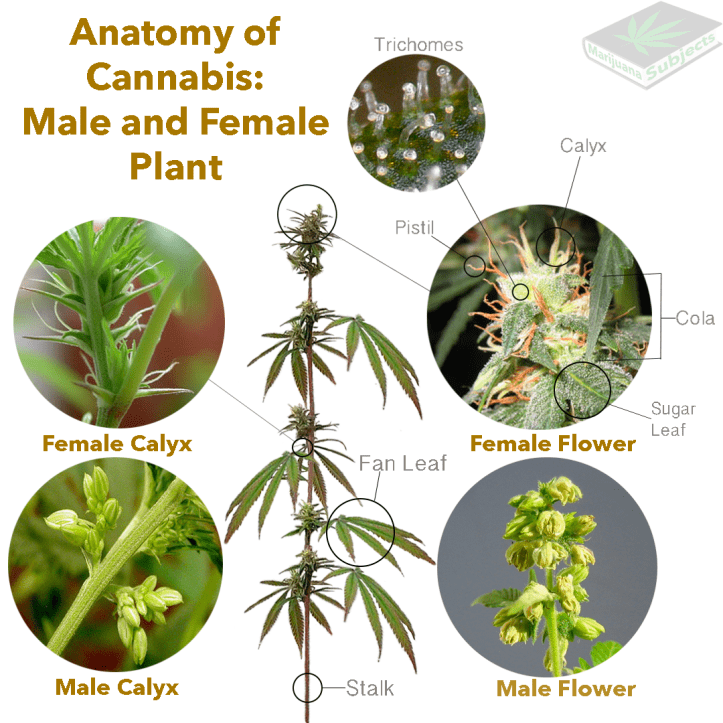
Source: DocMJ .com